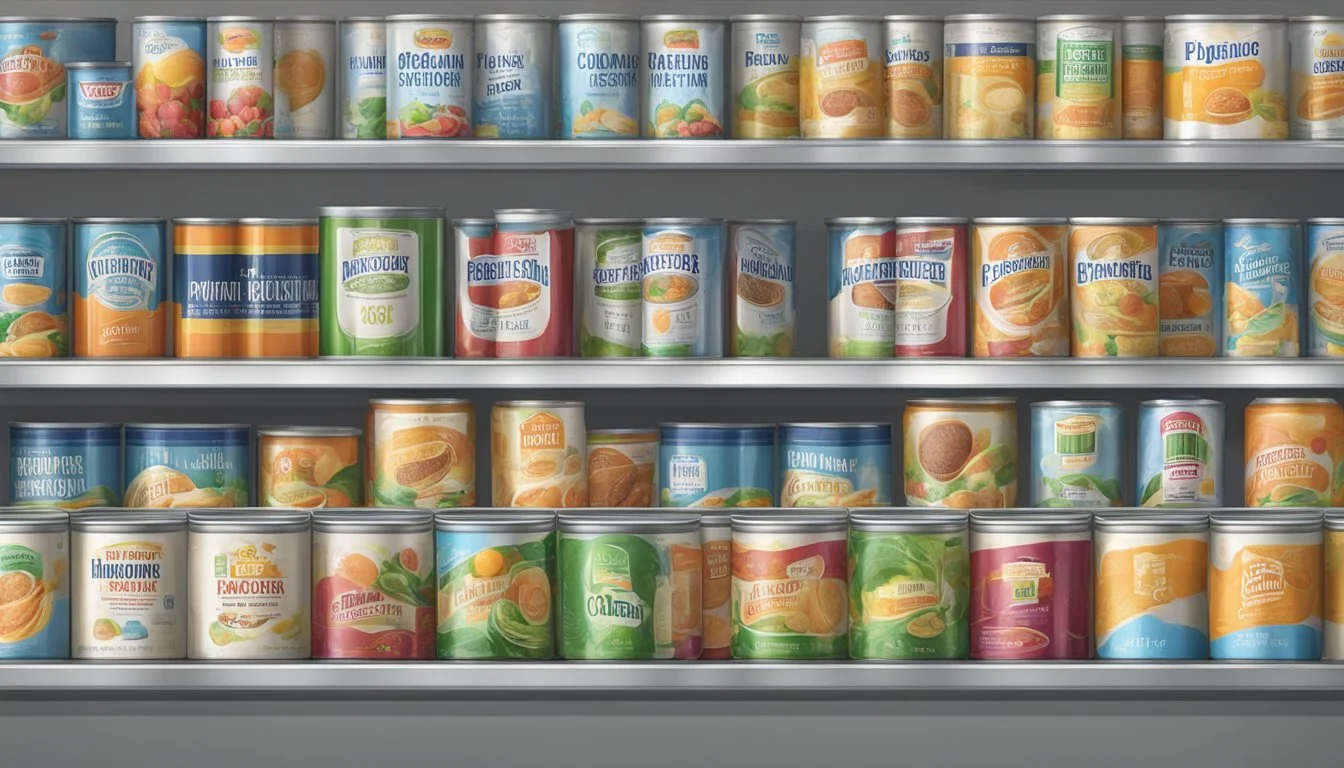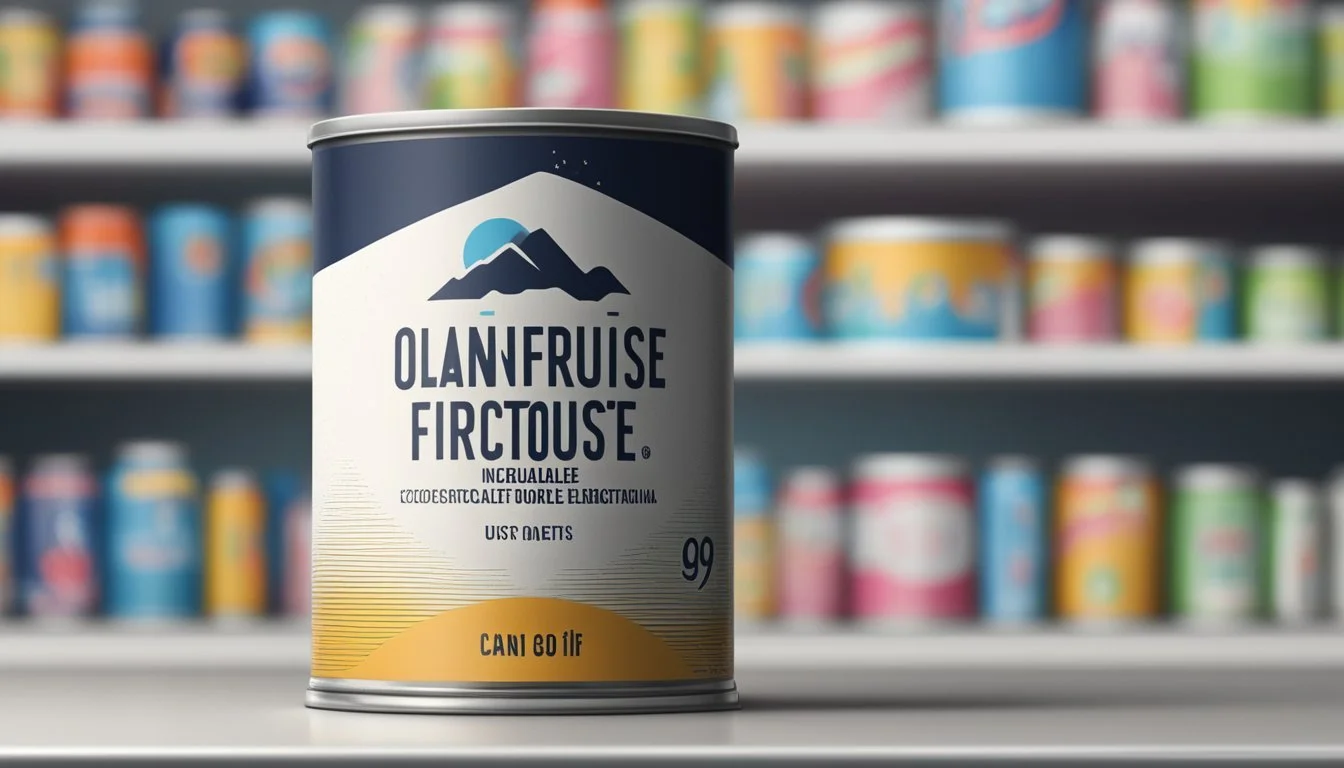How Long Does Canned Oligofructose Last?
Shelf Life and Storage Tips
Canned oligofructose, a form of soluble fiber derived from various plants, is known for its stability and resistance to decomposition. When encapsulated in the controlled environment of a can, oligofructose enjoys a notably extended shelf-life. This longevity stems from the canning process itself, which involves sealing the product in an airtight container and heating it to destroy potentially harmful microorganisms and enzymes. The process ensures that the oligofructose retains its quality and nutritional value over time, provided that the cans remain unopened and are stored under appropriate conditions.
Storage conditions are pivotal for maintaining the safety and prolonging the quality of canned foods, including those containing oligofructose. A cool, dry place away from direct sunlight is ideal. These conditions will delay the deterioration of the canned content by slowing down the reactions that lead to spoilage. It is important to note that while the shelf-life of canned oligofructose is significant, it is not infinite. Over time, even without the presence of spoilage pathogens, chemical reactions can cause changes in flavor, color, and texture.
In terms of safety, consumers should be vigilant for any signs of can damage or compromise, such as bulging, leaking, or rusting, which can indicate a risk of contamination. The integrity of the can's seal is a critical barrier against external contaminants, including Clostridium botulinum, which can produce harmful toxins. Although the risk is low, it is a serious consideration for all canned products. Therefore, regular inspection of canned goods, even those with a long shelf-life like oligofructose, is highly recommended to ensure they remain safe for consumption.
Understanding Oligofructose
Oligofructose is a soluble dietary fiber with various health benefits and applications in food production. Particularly noteworthy is its role in the canning industry as a shelf-stable ingredient that can withstand the preservation process.
Nutritional Profile
Oligofructose is derived primarily from fructose polymers and classifies as a subgroup of inulin with a degree of polymerization (DP) less than or equal to 10. As a soluble fiber, it is not digested in the small intestine; instead, it travels to the large intestine where beneficial bacteria ferment it. This process bestows it with a lower caloric value compared to many other carbohydrates.
Caloric Content: Reduced due to non-digestibility in the upper gastrointestinal tract.
Health Benefits: Includes gut health improvement, enhanced satiety, and better blood sugar control.
Natural Sources: Found in various foods, such as onions, garlic, and bananas.
Canning Process and Shelf Stability
The canning process of oligofructose involves heat treatment, which effectively sterilizes the contents, ensuring that oligofructose remains shelf-stable over an extended period. Canned oligofructose and foods containing it generally retain optimal quality and flavor for at least one year post-canning.
Optimal Quality Duration: Up to the first year.
Safety: Remains safe for consumption beyond a year, under proper storage conditions.
Storage Recommendations: To maintain quality, store in a cool, dry place away from direct sunlight.
Foods with added oligofructose benefit from its shelf-stable properties, as it does not have an internal mechanism that compromises its edibility shortly after a specific expiration date, making it a reliable ingredient for long-term food storage solutions.
Safety and Quality Indicators
When approaching the subject of canned oligofructose's longevity, consumers should primarily concern themselves with safety and quality. These aspects are heavily influenced by spoilage signs and an understanding of expiration dates.
Identifying Spoilage Signs
Color and Smell: A change in the color or a foul odor emanating from the canned oligofructose can signal spoilage. If the product appears darker than usual or has an off-smelling scent, it should not be consumed.
Texture and Taste: The texture should remain consistent, and any signs of sliminess or an unusual taste indicate that the product is no longer fresh.
Understanding Expiration Dates
Expiration Date Labels: Canned oligofructose typically comes with a "best-by" or "use-by" date. The "best-by" date refers to quality, with the product being at its peak freshness before this date, whereas the "use-by" date is more directly related to safety.
Quality Beyond Dates: Although the "best-by" date can help indicate optimal quality, canned oligofructose may still be safe to consume after this date if the can remains undamaged and there are no signs of spoilage.
Storage Recommendations
In ensuring the longevity of canned oligofructose, adhering to the best storage practices is crucial. This section outlines the ideal conditions for preserving the quality of this product.
Optimal Storage Conditions
Canned oligofructose should be stored in a pantry or cupboard that is consistently cool and devoid of direct sunlight. To maintain the product's integrity, one should aim for an environment that is dry and cool. A dry place is imperative to prevent can corrosion which could compromise the contents. The ideal temperature range for storage is 50° to 70°F (10 to 20°C).
The specifics:
Temperature: 50° to 70°F (10 to 20°C)
Avoid direct sunlight and moisture
Store in a cool, dry place
Impact of Temperature and Humidity
Temperature and humidity play pivotal roles in the shelf life of canned oligofructose. Elevated temperatures can accelerate the degradation of both the can and its contents, leading to potential spoilage or food safety issues. It is essential to keep cans away from heat sources such as cooking appliances, heaters, and direct sunlight.
Humidity can cause external can damage, such as rust, which might compromise the seal and result in contamination. Consistently dry conditions are paramount in preventing these issues.
Key aspects to consider:
Maintain consistent, moderate temperatures
Keep cans in dry conditions to avoid rust and spoilage
Potential Health Risks
When discussing the longevity of canned oligofructose, it is crucial to understand the potential health risks associated with improper canning and storage. These risks predominantly center around the dangers of foodborne illnesses such as botulism, a serious condition caused by toxins produced by the bacterium Clostridium botulinum.
Botulism in Canned Foods
Canned foods, including those containing oligofructose, can be susceptible to Clostridium botulinum if not processed correctly. The toxin produced by this bacteria is extremely potent and can lead to severe food poisoning. Symptoms of botulism can appear within hours to days after consuming contaminated food and can include double vision, drooping eyelids, difficulty swallowing, and muscle weakness.
Prevention of Contamination
To ensure the safety of canned foods, proper sterilization and sealing techniques are essential. Here are steps one can take to prevent contamination:
Use Pressure Canning: For low-acid foods like oligofructose, a pressure canner is necessary to achieve the high temperatures required to destroy botulinum spores.
Follow Guidelines: It's important to adhere to recommended canning guidelines, including time and pressure specifics.
Inspect Cans: Before use, inspect cans for any signs of damage, swelling, or leaks, as these are indicators of potential contamination.
Store Properly: Cans should be stored in a cool, dry place and used before the expiration date to reduce the risk of toxin development.
Ensuring that these precautionary measures are followed will significantly reduce the risk of contamination and promote a safe consumption experience.
Maximizing Shelf Life
To ensure that canned oligofructose maintains its quality and shelf-life, certain storage and handling practices need to be diligently followed. These methods are instrumental in preserving the integrity of the vacuum seal and preventing premature spoilage.
Proper Opening and Handling
When opening canned oligofructose, it is essential to use clean can openers and avoid contaminating the contents. The vacuum seal must be intact prior to opening; a compromised seal can lead to spoilage. Once opened, transfer any unused oligofructose to a sealable glass or plastic container.
Check the seal: Ensure the vacuum seal is intact before opening.
Use clean tools: Open the can with a clean can opener to prevent contamination.
Transfer properly: Move unused oligofructose to a sealed container to maintain freshness.
Usage of Leftovers
Leftover oligofructose should be handled with care to extend its usability. It's crucial to store leftovers in the refrigerator in a tightly sealed container to discourage bacterial growth and preserve quality. One should consume leftovers within 3-5 days to ensure safety and prevent waste.
Refrigerate promptly: Store leftovers in the refrigerator immediately after opening.
Seal tightly: Use airtight containers to keep oligofructose fresh and reduce oxidation.
Consume quickly: Aim to use leftover oligofructose within 3-5 days for best quality and safety.
Special Considerations for Home Canning
Home canning is a method that preserves food for extended periods. However, when dealing with oligofructose and similar substances, it's essential to understand the distinct considerations that separate home canning from commercial processes, as well as the best practices to ensure food safety and quality.
Differences from Commercial Canning
Home canning does not employ the industrial-grade equipment and stringent procedural controls that commercial canning does, affecting the shelf life and safety of canned products. While commercial canning often applies high-temperature processing that achieves a commercially sterile product, home canners must be meticulous to ensure the elimination of bacteria such as botulinum spores. It's important to note that home canned goods may not last as long as commercially canned products due to these differences.
Best Practices in Home Canning
Adherence to best practices is crucial for ensuring the safety and quality of home-canned goods, including those containing oligofructose.
Storage: Store home-canned goods in a cool, dark place and consume within one year for best quality.
Guidelines: Always follow up-to-date canning guidelines from reliable sources such as the USDA to ensure food safety.
Canning Process: The use of proper canning techniques, including the use of a pressure canner for low-acid foods, is essential.
Jar Inspection: Before storage, inspect jars for proper sealing and check regularly for signs of spoilage.
By following these guidelines, home canners can reliably produce safe and high-quality canned foods.
Legislation and Guidelines
Within the framework of food safety, legislation and guidelines play critical roles in ensuring that products like canned oligofructose are monitored for quality and safety. The United States Department of Agriculture (USDA) and the Food Safety and Inspection Service (FSIS) are authoritative bodies that establish standards and guidelines.
USDA and FSIS Standards
The USDA sets the bar for food safety, while the FSIS enforces the proper labeling and safety of food products. Specifically, for canned oligofructose, the USDA provides guidance on processing and preservation to ensure that the product remains safe and of high quality for consumption. These guidelines cover critical aspects such as processing temperatures, times, and container seals, which affect the longevity and safety of canned goods.
The FSIS ensures accurate product dating and provides recommendations on shelf life, with a strong emphasis on protecting consumers against foodborne illnesses. By adhering to these regulations, manufacturers and consumers alike can trust in the safety and shelf stability of canned oligofructose.









